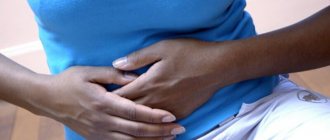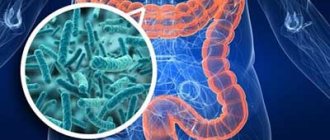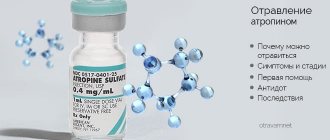How the infection spreads
The main source of transmission of infection is a sick person, who mainly excretes viruses in feces. It can pose a danger to healthy people throughout the period of symptoms and for another 10 days after illness. You can become infected through contact with a sick person and his personal belongings. Also, the source of influenza can be unwashed vegetables, poorly prepared food products (usually dairy products due to the specifics of their production process). Rotovirus tolerates cold well and can survive in the refrigerator for a long time.
Another route of transmission of infection is airborne droplets. Because the stomach flu is an inflammation of the airways, coughing spreads viruses through the air. The most susceptible to the disease are people with weak immunity, located in crowded places (office, school, kindergarten).
Not everyone knows how many days the incubation period can last. The first signs of the disease may appear even on the 5th day after the virus enters the body. The disease lasts a week, after which the person develops immunity, during which re-infection is practically not observed. The exception is the initially weakened immune system in adults and children.
Doctor Komarovsky's opinion
Many mothers are accustomed to trusting Dr. Evgeniy Komarovsky when it comes to their children’s health.
The well-known pediatrician emphasizes that, unlike influenza and other strains, rotavirus does not live on the mucous tissues of the nasopharynx, but in the small intestine. Also E.
Komarovsky notes that the virus is quite contagious and has many modifications. The pathogen's high resistance to low and high temperatures, air and sunlight complicates the fight against it.
The child remains contagious from the moment of infection until the end of the recovery period. The doctor recommends limiting the child’s contact with other people until he is completely recovered.
Komarovsky notes that even cleanliness and compliance with all hygiene rules cannot protect a child from infection with rotavirus - just remember how this disease is transmitted.
Newborn babies have reliable protection against viruses in the form of maternal immunity until they are six months old, and then they are at increased risk of contracting a rotavirus infection.
The disease itself is not fatal, but it happens that the consequences after it lead to death. Therefore, the doctor strongly recommends that parents closely monitor the health of their children and immediately seek professional medical help when the first symptoms of the disease appear.
Clinical manifestations of intestinal flu
On average, the incubation period of rotavirus infection lasts from 1 to 3 days.
Acute symptoms disappear on the 5th day. The recovery period for the body after illness is about 1 week. This way you can understand how long rotavirus infection lasts.
When microorganisms enter the mucous membrane of the small intestine, they begin to actively develop; during this period the disease does not make itself felt. When the virus has invaded healthy cells and infected them, the body reacts, which is characterized by violent, acute manifestations.
- Vomiting is the first sign of gastroenteritis. It can be either one-time, two times a day, or have frequent urges (up to 12 times). It can last up to several days. After the vomiting stops, we can say that the initial period of the acute course is over. In adults, vomiting is a rare symptom.
- Loose stools are repeated many times and may accompany vomiting, but continue for more days. Attacks of diarrhea can be imperative in nature, in which a person is unable to restrain himself. Feces may have a foamy consistency and a greenish tint with a pungent clay odor. Sometimes mucus may be present. In adults, diarrhea is less liquid and frequent than in children.
- Pain in the upper abdomen can accompany diarrhea or occur independently. The pain is moderate, rarely intense or cramping.
In the first days, you should not try to restrain vomiting and diarrhea, since at the same time the body is freed from viruses.
Symptoms of a digestive tract disorder may last from 3 to 6 days. As a rule, sick people experience a runny nose, sore throat, and fever.
In addition to specific symptoms, the disease is characterized by general signs of intoxication:
- Weakness;
- Headache;
- Chills;
- Muscle pain.
In more severe cases, dehydration develops, which can be very dangerous for the child's body. In adults, dehydration is not observed. Parents should pay attention to the following manifestations in children:
- Drowsiness and lethargy;
- Crying without tears;
- Lack of saliva and refusal to eat;
- Prolonged periods without urination
- Flabby dry skin.
If severe dehydration occurs, you should try to replenish the body with fluid, often asking the child to drink; if this cannot be done, seek medical help immediately.
Causes
For successful treatment, you need to understand exactly how long rotavirus infection lasts in a child, as well as how exactly it is transmitted. The disease is epidemic in nature. A feature of the infection is its persistence in the environment. Rotavirus lives in water for about 2 months, on objects for up to 1 month, and in feces for more than 6 months. The infection does not die under the influence of disinfectants or acids, but is afraid of high temperatures.
It only takes a small number of pathogenic microorganisms to trigger an infection. Doctors identify such methods of infection as:
- nutritional – the virus is found in feces or vomit;
- contact and household;
- aerogenic – the infection spreads through the air.
Children over 12 years of age are much less susceptible to this disease. The clinical picture may not be too pronounced. Diarrhea is minor and there is no vomiting at all.
Rotavirus infection is mainly associated with dirty hands. This is the most common method of infection. The mechanism of infection includes the following stages:
- after visiting the toilet a person does not wash his hands;
- touches cutlery and food with dirty hands;
- the virus is transmitted to a healthy person and begins to actively multiply in the intestines.
The carriers of the virus are mostly apparently healthy people. When rotavirus is in a latent state, a person may feel well and have no symptoms at all.
Rotavirus is quite often transmitted through household contact, especially in children's groups, and there are also outbreaks of infection in hospitals. You can become infected through close proximity to a sick person, even with careful adherence to hygiene rules.
Therapy for rotavirus infection
Rotavirus infection does not require specific treatment. The body itself will be able to cope with this pathology within 5-7 days. The main goal of therapy in this case is to try to relieve symptoms, support the body and normalize the functioning of the gastrointestinal tract after stressful situations.
To prevent dehydration during an infectious disease, you need to drink as much water as possible, about 2 liters per day. In order not to provoke vomiting by drinking too much, you need to give the patient 1 spoon every 5 minutes. If signs of dehydration have made themselves felt, solutions prepared on the basis of drugs such as Regidron or Citroglucosalan will help normalize the body’s electrolyte balance.
To reduce intoxication, sorbents are prescribed - activated carbon, Enterosgel, Sorbex.
Body temperature can be reduced by taking antipyretics. However, you need to take medications when the thermometer is 38 degrees or higher. Rotovirus dies at this temperature; if it is brought down at low levels, an environment will be created for its normal further reproduction).
If you have severe pain in the abdomen, you can take 1 tablet of no-shpa, as a rule, this is enough for the pain to go away.
To normalize the intestinal microflora, the patient is prescribed medications that contain enzymes (Linex). You should also adhere to a light diet based on chemical, thermal and mechanical sparing. Restorative therapy is carried out over 2-3 weeks.
You need to know that rotavirus infection cannot be treated with antibiotics; lipoferons, which have an antiviral effect, can be prescribed.
After a short amount of time after the infection, the body recovers completely; the rotavirus does not become chronic.
If treatment for intestinal flu begins in a timely manner, then in the near future you can expect a positive result and the disease will pass in the shortest possible time. If the infection starts, there is a risk of developing various complications.
Dynamics of hyperthermia
Fever begins on the first day of illness, is associated with vomiting, diarrhea, and lasts up to 4-7 days. During primary infection with rotavirus in children, the temperature is always high, can be controlled with non-steroidal anti-inflammatory drugs, and returns after the medication has stopped working.
The addition of an intestinal bacterial infection stabilizes high temperatures ; parents complain about the ineffectiveness of antipyretic drugs. An increase in temperature is a normal physiological process that indicates proper immune function.
The absence or decrease in thermal indicators indicates immune deficiency . The absence of fever during secondary infection always delays the recovery process.
Hyperthermia in children is registered on the first day of the disease , rises mainly at night, and worsens the quality of sleep. During the day the child is lethargic, sleepy, and capricious.
Preventive measures
In order to protect yourself and your family from possible infection, you need to take the following measures:
- Keep your hands and products clean. Infection often occurs through drinking contaminated tap water. Prevention in this case is to boil water before drinking. After visiting the toilet or outside, before eating, you need to wash your hands well with soap. After washing fruits with plain water, it is advisable to pour boiling water over them. Particular attention should be given to young children. Toys, pacifiers, bottles should be kept clean and periodically doused with boiling water.
- Vaccination of the population. Preventive antiviral vaccination is carried out only in European countries and the USA; the Rotacrix vaccine is officially registered in our country. It is recommended that the vaccine be given to children between 6 and 24 weeks of age. For the full course, the procedure must be repeated after 1 month. Vaccination provides 80% protection against rotavirus infection and 100% protection against its complications.
- Isolation of patients. If a person gets sick, he should be isolated from the source of inflammation for 10-15 days. When there are many cases of illness among children, quarantine is introduced in kindergartens and educational institutions. At the slightest manifestation of the disease in adults, it is better to stay home to prevent a mass epidemic.
- Development of immunity. In the body of a person who has had an infection, special antibodies are formed that persist for 1-2 years. These antibodies protect the body from repeated cases of illness caused by a specific serotype of the virus. This protection does not provide a 100% guarantee. After 1 year, you can get sick with the same serotype of rotavirus infection. But, if infection occurs twice, then more stable immunity is developed for 2-3 years.
Rotavirus infection is a very unpleasant disease. However, with timely treatment, his prognosis is very favorable and recovery will not take long.
Rotavirus, or rotavirus gastroenteritis, is quite widespread in the external environment, and children under the age of two are most often affected by this disease. Moreover, this happens in almost all countries of the world, regardless of the standard of living in them. Although the mortality rate from this disease in developed and developing countries is very different. 90% of children over 4 years old have antibodies to this virus, which indicates its widespread distribution. This pathogen was first discovered not so long ago, in 1973. This was done by scientists from Australia.
Adults can also get this disease, but in them it occurs in a milder form (with the exception of severely weakened patients and the elderly) and with milder symptoms.
The widespread distribution of this infection suggests that the disease is highly contagious. That is, in a team or family where one person is sick, there will certainly be more sick people. This is transmitted both through dirty hands and through food (especially dairy products). It’s not for nothing that this disease is called the disease of dirty hands.
The incubation period of rotavirus infection means that pathogenic microorganisms multiply and accumulate in the body during this period. There are no symptoms at this time. The duration of this period will depend on many reasons - on the amount of pathogen that has entered the body, on the state of the patient’s immunity, on the presence of concomitant diseases. On average, this period lasts 2-3 days.
The disease begins acutely. The patient has the following symptoms:
- temperature increase;
- repeated vomiting;
- watery stool without blood;
- pain and rumbling in the stomach;
- weakness.
In addition to manifestations from the gastrointestinal tract, the patient also exhibits catarrhal symptoms - runny nose, cough, sore throat. These symptoms characterize rotavirus infection in children. In adults, its manifestations will be similar to indigestion.
These symptoms are also typical for other, more serious illnesses (for example, dysentery and salmonellosis), so if you have such symptoms, especially in young children, you should immediately call a doctor.
How long does vomiting last?
It is necessary to know exactly how long rotavirus infection lasts in a child, but also for how many days the symptoms of the disease are observed. In children aged 1-5 years, at the initial stage of the disease, pronounced symptoms are observed. Rotavirus can occur against the background of an acute respiratory viral infection with redness of the throat, cough, and runny nose.
How many days a rotavirus infection lasts in a child and vomiting continues largely depends on the child’s immunity and age. For infants, the type of feeding is of particular importance. Mother's milk contains the required antibodies that support the baby's immunity. A child tolerates intestinal flu much easier than an artificial one.
With low immunity, the disease is severe, lasting 7-10 days with pronounced symptoms and frequent vomiting. When the body is infected with moderate rotavirus, vomiting lasts mainly 3-5 days.
If the baby’s immune system is strong enough and the disease occurs in the mildest form, then vomiting goes away after a day or maybe only 1-2 times. As the child grows up, during the course of rotavirus, the symptoms manifest themselves much less acutely, and in the event of re-infection, there is already immunity and the signs of the disease are mostly erased.
Symptoms of the disease
It is difficult to say exactly how many days the illness lasts. The illness usually lasts about a week. Full recovery may take ten days. Rotovirus is very dangerous for a child, especially immediately after birth. His immune system is still just gaining strength.
If your baby has diarrhea, constantly vomits and feels sick, you should see a doctor immediately. Treatment should be prescribed as soon as possible.
Characteristic signs of rotovirus disease are:
- lethargy,
- Drowsiness,
- Dry lips
- No saliva
- When the baby cries, there are no tears visible,
- The skin becomes dry and flabby,
- Very little urine.
All these symptoms require urgent consultation with a doctor. Every day without treatment can only worsen the situation and lead to serious consequences.
Intoxication of the infection can occur similar to the symptoms of ARVI:
- Stuffy nose,
- Runny nose,
- Slight cough
- Sometimes otitis media or conjunctivitis.
- Why does intestinal infection occur?
It is transmitted through contact with a sick person. If a child develops symptoms of the disease, he immediately becomes a carrier of the infection.
Rotovirus is especially dangerous on the fifth day after the onset of the disease. Dirty hands and toys that kids love to taste become the cause of the disease.
The cause of intestinal flu can be food that has been touched by a sick person. Unboiled water can also cause an intestinal infection, since chlorine is not able to kill a harmful virus.
Symptoms
Approximately four days after exposure to rotavirus, the baby begins to develop rotavirus infection. This period may be different, it all depends on the individual state of the child’s body.
The infection can remain in the body for several days and not manifest itself in any way. It takes on an acute form a little later.
The development of intestinal infection can occur in several ways. In one case, the child appears:
- soreness,
- Dry cough,
- Runny nose.
In another variant, very characteristic symptoms appear:
- Diarrhea,
- Nausea,
- Gastroenteritis,
- Abdominal pain
- Lethargy.
Carrying out diagnostics
Deterioration in well-being may be associated with many other infections, which include diarrhea and vomiting. That is why a comprehensive examination is needed to accurately diagnose the disease. To know how to carry out treatment, you need to undergo a series of tests.
Stool microscopy will help determine the presence of the virus. Serological testing of blood serum helps identify specific antibodies. A couple of hours after taking the test, you can get a result that will help you choose adequate treatment.
You can purchase a test and perform it yourself if signs of illness appear. The duration of rotavirus infection in children largely depends on the timely detection of the disease and the correctness of the treatment.
Incubation period
When infection occurs, characteristic signs do not appear immediately. The infection can remain in the body for several days and not manifest itself in any way. It takes on an acute form a little later.
How long the incubation period can last, how long it will last, depends on the condition of the child’s body. Its maximum can reach five days. During this period, the virus actively multiplies. It is difficult to determine how many children are sick at this time. The children feel fine.
But days pass. The incubation period is ending. The child's temperature begins to rise, he becomes weaker, feels sick, and has diarrhea.
To prevent possible complications, such an infection must be treated immediately. You can strengthen the child’s nutrition, give him more vitamins.
Important! Parents may not notice the onset of the disease, since the symptoms of the disease will not manifest themselves. If a healthy baby came into contact with sick children in kindergarten, it is imperative to take preventive measures.
Treatment of intestinal disease
There is no specific treatment for this disease. All therapeutic methods have one goal, to eliminate the symptoms of infection.
In order for your baby to gain additional strength to fight infection, you need to follow a diet. The doctor prescribes special medications:
- Antispasmodics,
- Immunotropic drugs,
- Antipyretic.
To completely remove a large number of virus particles, you need to arrange for children to take antibiotics. The doctor who has diagnosed rotavirus infection prescribes antibacterial suppositories:
- Viferon,
- Lipfeorn.
The course of treatment and dosage depend on the age of the patient and can last five days.
Carrying out prevention
It is necessary not only to know at least approximately how long the acute period of rotavirus infection lasts, what is typical for it, how treatment is carried out, but also how to prevent the occurrence of the disease. It is necessary to follow basic rules of hygiene, teach children to wash their hands with soap after each visit to the toilet, walk, and before eating.
Particular attention should be paid to cleaning the apartment and regularly thoroughly disinfecting all children's toys. During an epidemic outbreak, it is important to avoid contact with children who are sick with rotavirus. It is important to avoid consuming tap water. Vaccination against rotavirus is also very important.
Rehydration
To prevent dehydration, the baby should be provided with plenty of warm drinks. This will help maintain the desired fluid balance in the body and create normal working conditions.
First, the child is given one teaspoon, then the amount is increased. Specially prepared solutions have a positive effect:
- Humana,
- Regidron,
- Oralit,
- Chamomile decoction
- Boiled water,
- Rice water,
- Unsweetened compote made from dried fruits.
To remove toxins from the body and completely cleanse it, the baby is given:
- Activated carbon,
- Smecta.
To reduce the temperature you can use:
- Children's paracetamol,
- "Nurofen"
- "Cefekon" candles.
When there is a high temperature and convulsions, the baby can be wiped with a saline solution (one part salt to one part water).
For severe pain in the abdominal area, the child is given:
- No-shpu,
- Lacidophilus,
- Riobal.
During an intestinal infection, the child should be fed:
- Rice porridge,
- Mashed potatoes,
- Bananas,
- Baranki,
- Crackers.
Infants should be switched to lactose-free formulas. You should not give your baby:
- Dairy products,
- Sauces,
- Vegetables,
- Fatty foods
- Meat additives.
How to lower the temperature
The medications should be taken at intervals of two hours. This applies to suppositories and paracetamol tablets
When the temperature reaches 39 degrees, a child under three years of age is prescribed Tsefekon suppositories. Older children are prescribed paracetamol in the appropriate dosage.
Using candles is very convenient, as they can be placed on the baby when he is sleeping or awake.
But if the temperature does not drop and does not subside for a long time, children aged one year and above are prescribed paracetamol and a small quarter of analgin.
The medications should be taken at intervals of two hours. This applies to suppositories and paracetamol tablets. When taking other medications, the break should be 4 hours or more. The greatest positive effect for intestinal diseases is obtained by taking paracetamol.
To reduce the temperature, you can wipe your baby with a weak solution of vodka, but following certain rules. The child's body should be completely dried. Changes and free areas on the baby’s body are not allowed. After wiping, you need to put thin socks on your feet.
The wiping procedure can be carried out only half an hour later, after taking a tablet for fever, and if it has not begun to fall. When the temperature is high, it is forbidden to wrap the child.
Enterofuril helps to cope with gastrointestinal diseases accompanied by high fever. It should be taken morning and evening for five days. The dosage of the drug depends on the age of the patient. It will also help cope with prolonged diarrhea. Its analogue is Enterol.
No-spa will help relieve severe pain in the child’s abdomen. You need to drop one milligram of solution into your mouth, wash it all down with tea.
When the appetite is restored, so that the diarrhea disappears and the microflora is completely restored, doctors prescribe Bactisubtil to the child. A capsule dissolved in water should be drunk in the morning and evening, an hour before meals. The course of treatment lasts five days.
Complications
If intestinal flu is not treated correctly, adverse consequences may occur.
Dehydration occurs in the body. This can cause death. This cannot be allowed. The baby needs to be soldered urgently. At the hospital, the baby is given an IV.
The baby has an acetonemic state. Ketone bodies begin to accumulate in large quantities in the child’s body. They have a negative effect on his brain. This complication occurs due to a lack of carbohydrates consumed during the disease.
Convulsions caused by high temperature may occur. To prevent the appearance of a convulsive state, the baby’s body requires constant cooling, for which a saline solution is used. All areas of the body are thoroughly rubbed until the temperature drops.











